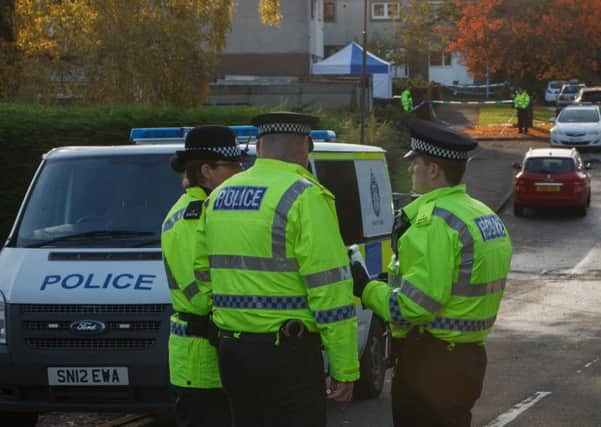Leader: Police Scotland needs help, but can help itself too


Even before the terrorist atrocities in Paris and the heightened need for homeland security, further cuts to police budgets were a big ask. But both the Scottish and UK governments are now under intense pressure to put police budget spending cuts on ice.
Protecting citizens is the first duty of government. And there are powerful reasons for both Holyrood and Westminster to look again at their proposals for spending reduction in this area. But this raises no less vexing a question: from where are the savings on government spending then to come?
Advertisement
Hide AdAdvertisement
Hide AdYesterday Calum Steele, chairman of the Scottish Police Federation, warned that the Scottish government would be foolish to continue with its programme of police cuts in the wake of the Paris terror attacks. Police Scotland is struggling to meet its reform savings target of £1.1 billion demanded by the SNP administration, and is facing a spiralling £25 million shortfall this year.
The administration says it has maintained officer numbers and invested £73 million in a serious incident campus at Gartcosh. Now the pressure for additional savings, with targets set against a “normal policing background” comes against a background of heightened security requirements.
Planned police staff redundancies were shelved following a public outcry and a damning HM Inspectorate of Constabulary report into police call handling following the death of two people on the M9 in July this year. Further reductions now would stretch public tolerance to the limit.
But savings – somewhere – must be found. And a sharp reminder of the difficulty faced by chancellor George Osborne came with the latest public sector net borrowing figures for October. These showed a rise of £1.1 billion compared with the same month a year ago to £8.2 billion – the highest level of borrowing in October in six years.
The figures mean that he will need to restrict borrowing to just £15 billion between now and April. While not impossible, it remains unlikely he will be able to meet the £69.5 billion OBR forecast without severe cuts in the Spending Review on Wednesday.
Bear in mind that major spending departments such as health and education are protected, as are international aid and defence. This inevitably means that other departments have to look ever more critically at areas where savings can be made.
One area where Police Scotland can help relieve the pressure is the sale of police buildings. There is little justification for tying up badly need resources in bricks and mortar when these can be sold – a move that would both raise revenue and reduce the drain on resources by way of repair and maintenance costs. Further savings could usefully be found in greater joint working between regions and making sure that the hefty sums spent on technology and IT equipment yield savings by way of reduced need for back office personnel. Our police forces may not be totally let off on Wednesday. But a continuing push on property disposals and other savings could help soften the blow.